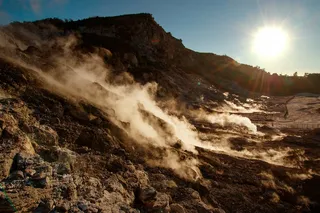With new high-tech telescopes hard at work on Mauna Kea in Hawaii and Cerro Paranal in Chile and with NASA continuing its barrage of planetary probes, space photos are becoming as common as postcards. Staggeringly dramatic, these images suffer only one fault: Most people have no idea what they're looking at. Fortunately, all it takes is a little insider knowledge to break the code.
Photo by VLT/ESO
Photo by Raghvendra Sahai, John Trauger (JPL), and the WFPC2 Science Team/NASA
Photo by Solar System Visualization Project/Magellan Science Team/JPL
Photo by SOHO/EIT Consortium
GALAXIES These groupings of billions of stars generally have oval or spiral shapes. They betray their distance by how detailed they appear. If the galaxy shows intricate structure, as does NGC 1232 (image 1, at right), it lies within 65 million light-years of Earth, in the Local Group or the Virgo Cluster. Throngs of small, featureless galaxies that all ...














